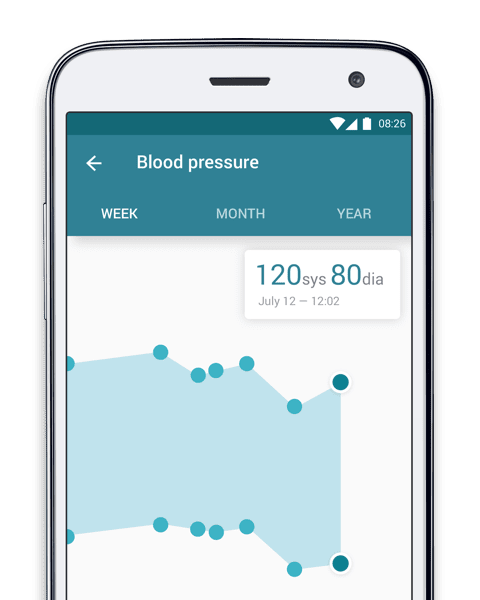Osteoporosis is a common disease, with an estimated 200 million people currently affected by it. It is a bone disease that can occur due to the under or overproduction of bone. This imbalance within the body can lead to weakened bones that may break during a fall, or in serious cases, cough or sneeze.
What does osteoporosis do to your bones?
The meaning of osteoporosis is “porous bone.” Bone tissue lives and grows throughout our lifespans. A healthy body produces the correct amount of bone and has small and healthy pores. When these bones are examined under a microscope, they should look like something like a honeycomb. When bone resorption or any other factor causes the body to produce too little or too much bone, the holes and spaces within bones become much larger. This results in a reduction of bone density and mass, in turn weakening them to the point that even small bumps may cause a fracture or break.
Oftentimes, the early stages of osteoporosis and bone resorption produce no symptoms, making it difficult to detect. However, once the bones have been weakened patients may begin to notice symptoms such as the following:
- Backaches and pain
- A loss of height over time
- Bones breaking easier than expected
- A hunched over posture
If you notice the following symptoms, especially if you’re over the age of 50, you should speak with your doctor.
How is osteoporosis diagnosed?
If your doctor suspects you may have osteoporosis, they will typically order a bone density scan. This exam will measure the density of minerals within the bone, in turn allowing the doctor to assess the risk of fracture and determine the best course of action in treating the disease. If you already have a fractured or broken bone, a doctor may perform a bone x-ray, CT scan, or MRI to determine if osteoporosis may have been a factor.
What are the risk factors for osteoporosis?
There is a wide range of factors, both within and outside of your control, that may lead to individual developing osteoporosis. These factors can range from your age to your lifestyle choices.
Unchangeable risks:
- Sex: Women are significantly more likely to develop osteoporosis than men.
- Age: As you get older, especially after the age of fifty, the risk of osteoporosis becomes greater.
- Family history: Having a direct relative with osteoporosis makes you far more likely to develop it yourself.
- Body type: People with smaller bodies and bones are at a higher risk of developing osteoporosis as they have less bone mass, to begin with.
- Race: People of Caucasian or Asian descent are more likely to develop osteoporosis than others.
- Hormones: Too much or too little of certain hormones, such as sex hormones, can lead to osteoporosis.
- Dietary factors: People who eat too little calcium or have eating disorders are much more likely to develop osteoporosis.
- Steroids: Extended use of corticosteroids has been linked with the development of osteoporosis.
Lifestyle Choices:
- Tobacco use: Researchers are not yet sure why tobacco is linked with osteoporosis, but it has been shown to weaken bones.
- Excessive alcohol consumption: Regularly drinking more than two alcoholic beverages per day puts you at an increased risk of developing osteoporosis.
- Sedentary lifestyle: Those who spend too much time sitting and don’t get enough exercise are more likely to suffer from bone resorption.
How is osteoporosis treated?
If you or a loved one has been diagnosed with osteoporosis, you will no doubt be wondering how it is treated. Unfortunately, there is no cure for osteoporosis. For that reason, treatment is centered around preventing fractures and strengthening bones as much as possible. The types of medicines prescribed by a doctor will be based on several factors such as age, sex, risk of breaking a bone, and previous injuries. In some cases, medication may not even be necessary, and supplements to ensure adequate calcium and vitamin D may be used to strengthen bones.
If your doctor decides medication is the best course of action, the following types are the most used for treating osteoporosis:
Bisphosphonates:
Bisphosphonates work by slowing down the rate at which bone is broken down within the body. This helps to maintain bone mass and can prevent broken bones. There is a wide range of bisphosphonates available, they are typically administered in the form of a tablet or injection. These drugs typically take at least six months to be effective and patients may be required to take them for years.
Selective estrogen receptor modulators (SERMs):
SERMs help patients maintain a healthy bone density and reduce the risk of broken bones. They have a similar effect on bones to the hormone estrogen and are particularly helpful for treating the spine. There is only one SERM currently available to treat osteoporosis, Raloxifene.
Parathyroid hormone:
Parathyroid hormone is a naturally occurring hormone produced within the body that helps to regulate calcium within bones. These treatments are given by injection and can stimulate cells to create more bone tissue. Most medications used to treat osteoporosis are used to slow bone thinning, while parathyroid hormone increases the density of the bones.
Hormone replacement therapy:
Hormone replacement therapy is a treatment available to women who are going through menopause. Since menopause can lead to osteoporosis, this therapy can help to regulate symptoms and reduce negative effects on bones. However, this treatment is uncommon as it is not intended to be used as a treatment for osteoporosis.
Testosterone treatment:
For some men, testosterone treatment may be able to help reduce symptoms. This only applies in cases when osteoporosis is caused by low levels of testosterone.
Here are some other posts we think you might enjoy:



